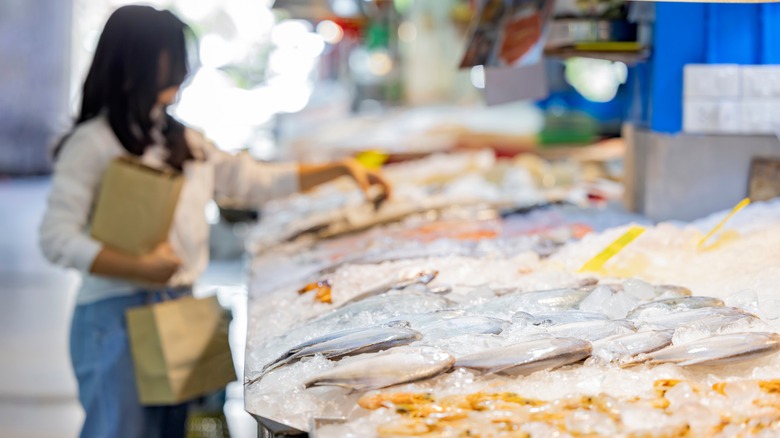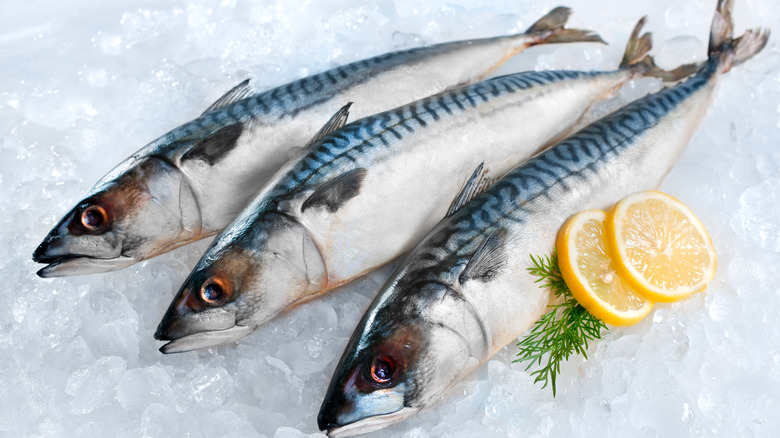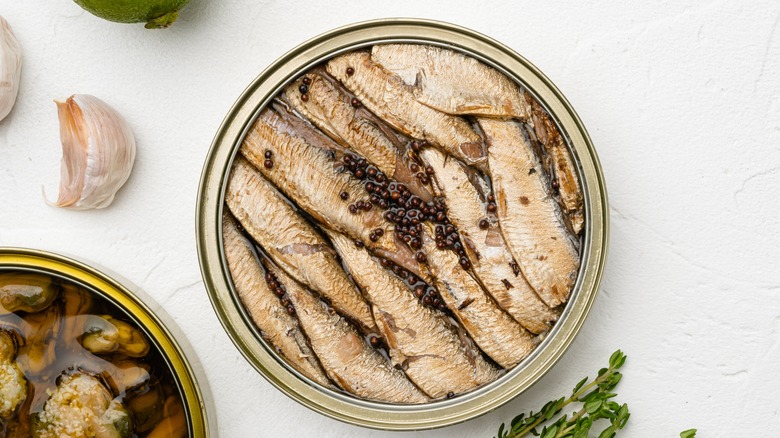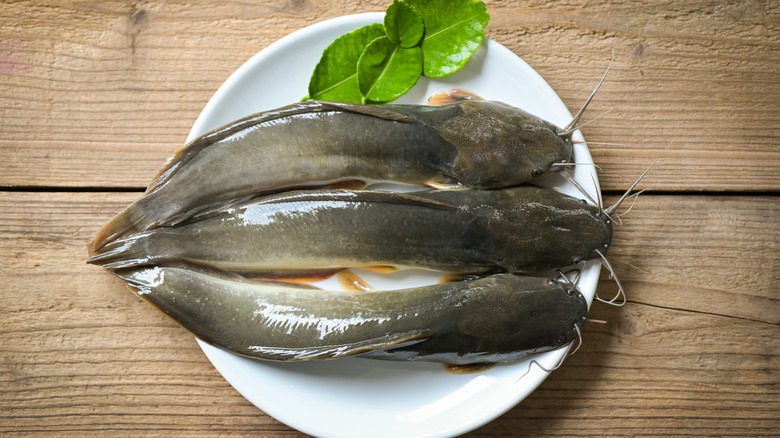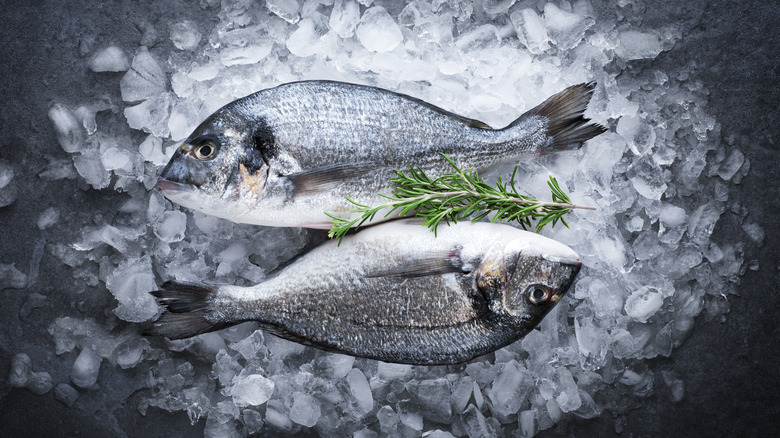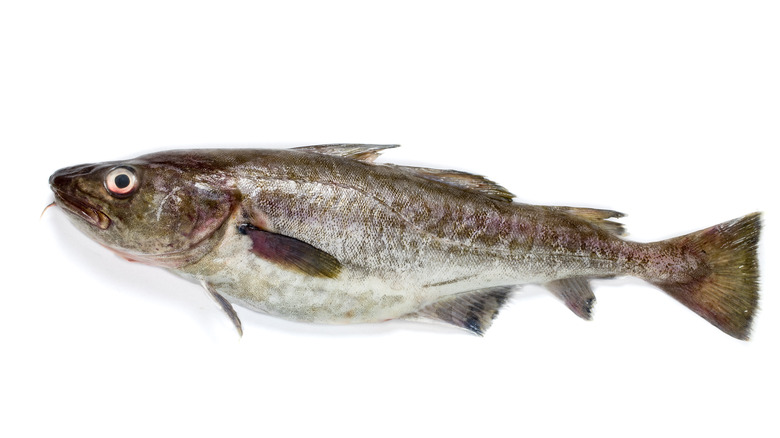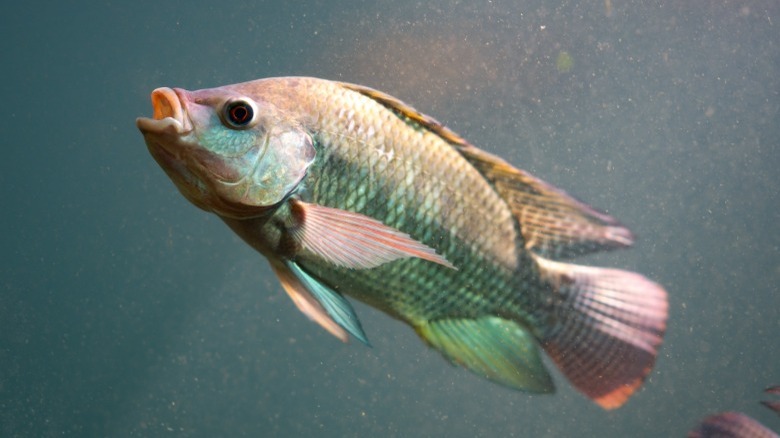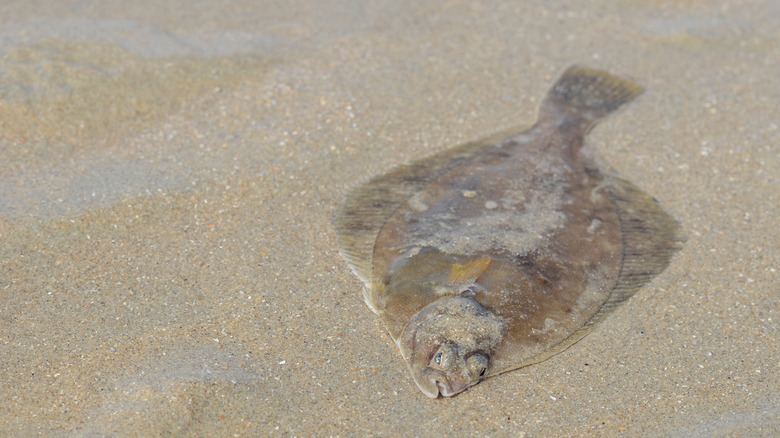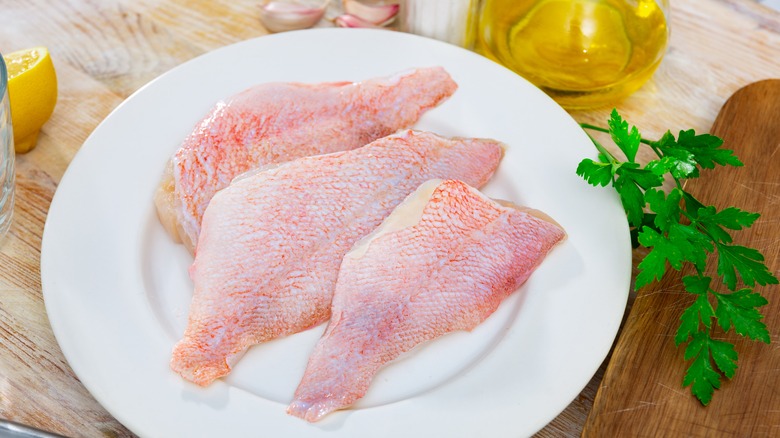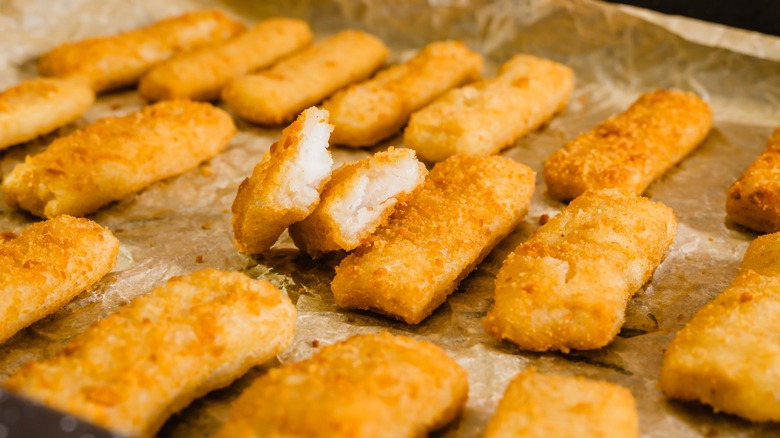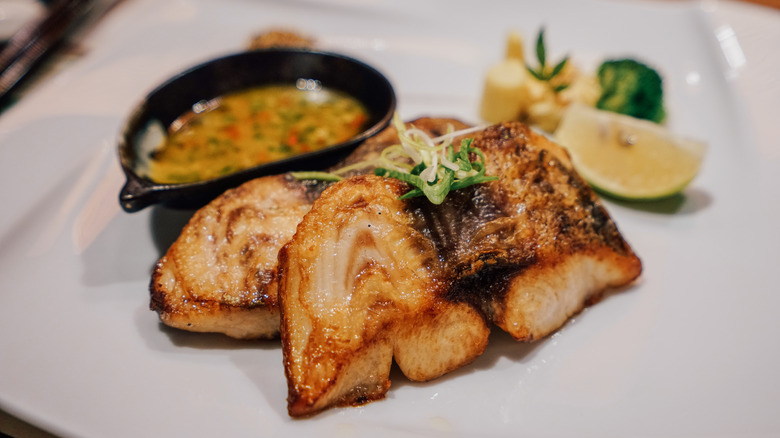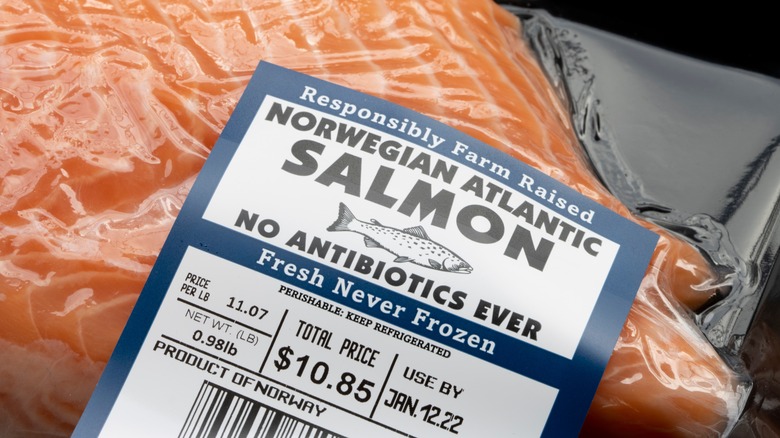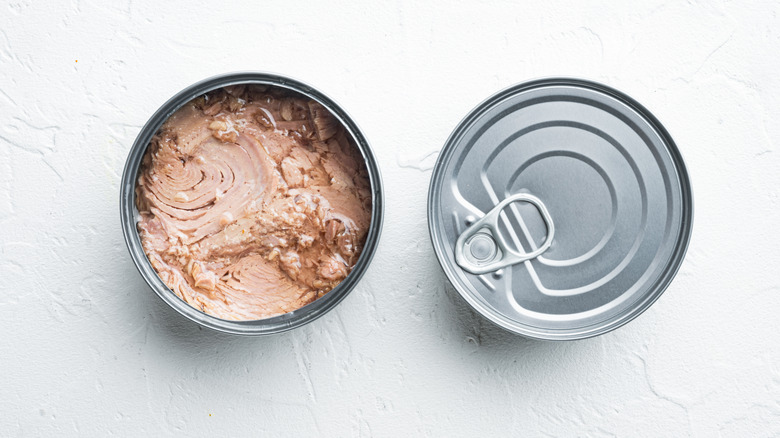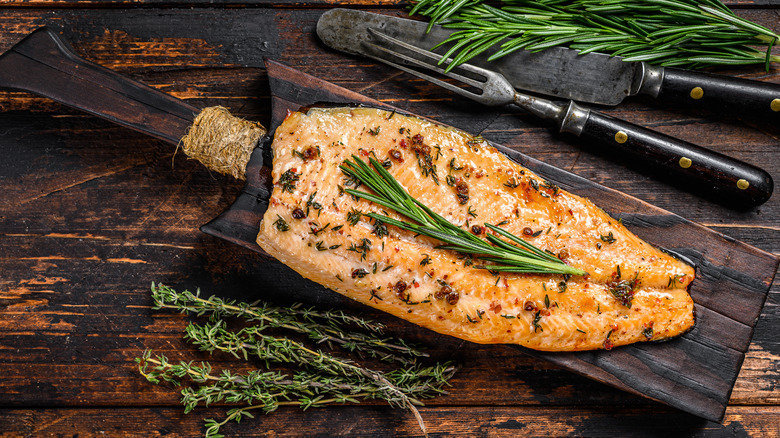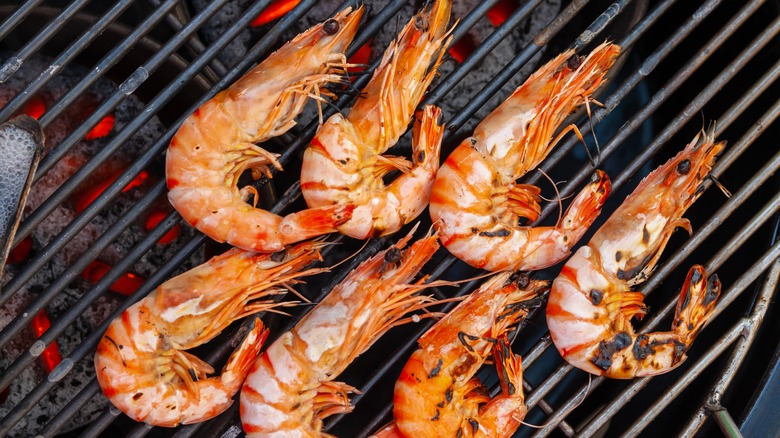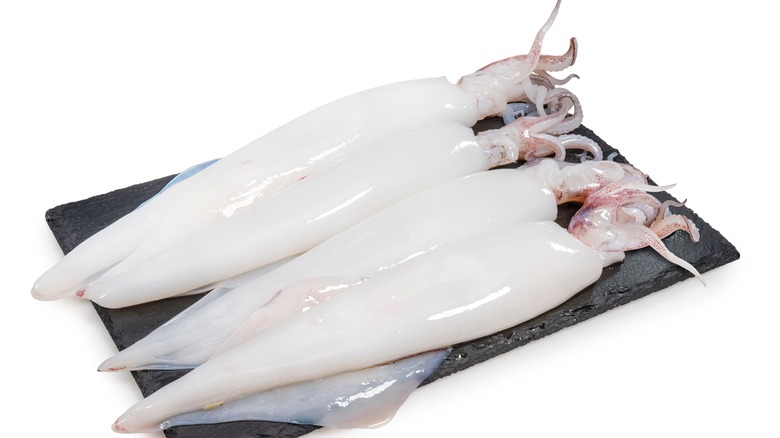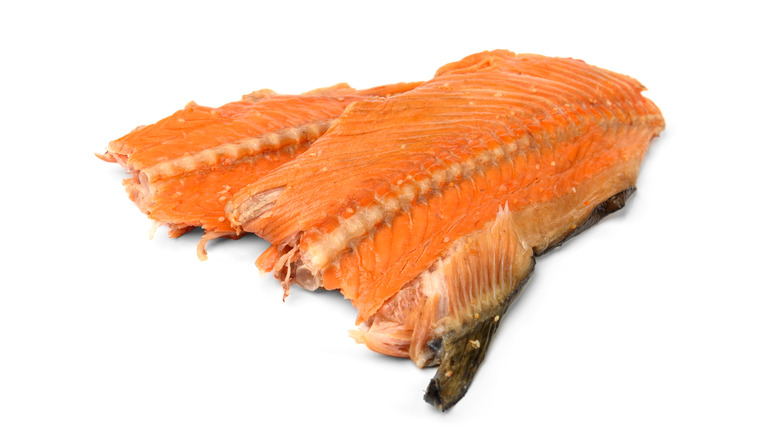17 More Affordable Options For Seafood Lovers
Seafood, the broad umbrella that encompasses everything from lobster to snapper, is universally loved by chefs and home cooks around the globe. Advancements in refrigeration and freezing technologies have made purchasing it more accessible. Combined with the plethora of knowledge and recipes about how to prepare the food, it's clear that there is no stopping the seafood train and the inclination of consumers to purchase fish from their local grocers and fishmongers. The United States' fish market alone is worth $102 billion, with 35% of that spent on seafood for at-home consumption (via Sustainable Fisheries).
Sustainable Fisheries notes that the COVID-19 pandemic substantially impacted consumer purchasing habits when it comes to seafood. As restaurants began to close, people started to look to their grocery stores to purchase affordable yet tasty cuts of fish. The trend of buying cheaper options has persisted through the pandemic and will likely still prevail in the uncertain economic state to come. If you're looking to obtain the numerous health benefits of eating seafood while keeping your budget in check, here are several picks you should look for during your next grocery trip.
Atlantic mackrel
The Alternative Daily recommends eating Atlantic mackerel. Since they are so small, they contain minimal concentrations of mercury compared to larger fish like tuna and swordfish. Plus, each serving of mackerel contains nearly four times the amount of vitamin B12 as salmon and a significant amount of your recommended daily iron intake. Mackerel is also very high in omega-3 fatty acids, which are important for brain and heart health.
Atlantic mackerel has a strong flavor compared to its fatty cousin — tuna. The flesh is velvety soft and has a distinct oily texture, which can be off-putting to some seafood enthusiasts (via Seafood Source). We recommend grilling or frying mackerel and serving it with bright acidic foods like pickles; the acidity can curb some of the fish's oiliness. You can purchase Atlantic mackerel fresh or frozen.
Sardines
According to Nourish, canned sardines are a common cheap seafood in Europe but have yet to grab the attention of American home cooks. These tiny, silvery fish can be sold canned in baths of tomato juice, oil, or water or purchased fresh. One of the only downsides to eating sardines, Nourish notes, is that one fish contains ⅓ of the recommended daily sodium intake. Sardines and anchovies are also high in purines, which is not recommended for folks with gout, either. But, the health benefits, including high omega-3 fatty acids and protein, along with the relative inexpensiveness of the food, make this type of fish perfect for seafood lovers. According to Howmuchisit.org, the average price of sardines depends on the variety you purchase; Chicken of the Sea or Bumblebee sardines tend to run the cheapest.
Top Chef finalist Adrienne Cheatham loves grilling fresh sardines with lemon after a long day in the kitchen. She notes that many people associate the seafood with the canned variety, which can have a more pungent aroma and flavor than fresh ones. Cheatham recommends preparing fresh sardines by rolling them in flour and frying them whole. For bigger varieties, she recommends grilling the fish on a pan or standard outdoor grill with a hit of lemon juice.
Farm-raised catfish
Catfish is a characteristically Southern seafood. Farmed catfish is one of the vibrant and effective types of aquaculture globally from a sustainability and consumer accessibility perspective. Unlike wild catfish, which can take on a muddy and somewhat unpure flavor, farmed catfish are regarded as having a very "clean" taste. Since the cultivated varieties are raised in a controlled environment, they do not have the same susceptibility to environmental pollutants as wild ones. According to Selina Wamucii, the average wholesale price for U.S. catfish for 2023 is between $1.98 and $2.19 per pound.
One of the most common preparation methods for this seafood is frying. You can purchase fresh farmed catfish and chop them into small pieces or get them pre-cut to make fried catfish nuggets. You can also dredge and fry the whole fish and serve it with bacon and tomato gravy. The catfish is ideal for baking and frying because of its relatively low oil content and nuanced flavor.
Farm-raised dorade (gilt-head bream)
The dorade, known as the gilt-head bream, is a firm, white-fleshed, aromatic fish found in the Mediterranean (via The View). Wild-caught dorade has become less accessible in recent years, but the farm-raised variety has skyrocketed in popularity, with the average price at around $10 per pound (as of January 2023). While this might seem a bit less "affordable" than cheap sardines or catfish, the fish is a much more affordable type of seafood for someone looking for a mature, complex flavor from their meal. The taste of the dorade is often compared to a more expensive red snapper.
Dorade has a thick fatty layer between the skin and the flesh of the fish, which is ideal for grilling or baking skin-on. The meat can also be added to a soup or a curry — or used as an ingredient in sushi or crudo. If you're looking for high-end seafood with a low-end price tag, dorade is your go-to fish.
Pacific cod
There are two varieties of cod often found in American waters: the Pacific cod and the Atlantic cod. The Atlantic variety was historically overfished, so its population is still in recovery. Meanwhile, the latter has been more stringently regulated to preserve its numbers and is cheaper due to its higher supply.
The Pacific cod has a milder flavor than the Atlantic cod, with firmer flesh that can stand up to grilling or baking (via Pittman Seafood); Ina Garten recommends using a center-cut cod filet for optimal baking sturdiness. You can also use Pacific cod filets to make fish and chips. According to AZ Animals, cod is more cost-affordable and leaner than salmon. It is also less calorie-dense and is higher in potassium, magnesium, and vitamin C.
Nile tilapia
Nile tilapia is one of the easiest fish to farm, thus making it one of the cheapest seafood for consumers to purchase (via the Foods Guy). This fish has a very mild taste that is perfect for folks who don't enjoy eating particularly oily fish or fishy flavors. Most Nile tilapia is purchased from farms in countries like Honduras, Mexico, Indonesia, and the United States. And despite all the potential drawbacks of buying farm-raised fish, those from reputable facilities typically do not have the muddy flavor of wild-caught or "dirty" aquacultured tilapia. This is because the seafood has a very "porous" attribute — meaning the fish will taste like the water it's grown in (via Chef's Resources).
There are numerous ways to cook this blank canvas of a fish, including grilling, baking, curing, steaming, and smoking. The tilapia's sturdy flesh makes it a good base for fish and chips as well. Since the seafood can be rather bland, adding spices like black pepper, garlic, and rosemary can amplify flavors, along with a squirt of lemon juice before serving.
Flounder
Food Network notes that flounder encompasses several different types of flatfish, including fluke, lemon sole, and dab. Most are sold as whole fish or skinned filets, but the skin is edible. The filets can be sautéed and are often breaded to maintain the flounder's delicate flesh. The seafood is a cheaper alternative to halibut; according to Food Storage Choices Alternatives, halibut filets can cost up to $17 more per pound than flounder. Halibut also has a slightly firmer texture and is often sold in thicker filets.
One of the best ways to elevate the flavors of flounder is to wrap it around a savory cracker mixture to make a delicious stuffed flounder recipe. It's the perfect way to feel like you're eating a five-star entree — just on a budget.
Farmed rockfish (hybrid striped bass)
Rockfish, also known as the striped bass, is a popular wild-caught fish found in U.S. coastal waters. But you can also purchase the farmed variety (a hybrid between the white bass and the wild striped bass) for a lower price tag than wild-caught. Farmed rockfish also have lower levels of mercury with similar levels of protein, selenium, and omega-3s. The Environmental Defense Fund also lists it as one of the best choices for eco-friendliness.
The farmed variety has a less coarse texture than wild-caught rockfish. The flavor is sweet, mild, and sturdy, so it is conducive to sautéing, grilling, or baking (via Seafood Source). We recommend using a thin coat of flour to help develop a brown crust for a pan-seared rockfish recipe.
Alaskan pollock
If you've had a Filet-o-Fish from McDonald's, you've had Alaskan pollock before. The chain switched their fish from more expensive halibut to cod, to eventually Alaskan pollock. According to the Genuine Alaska Pollock Producers, this seafood is one of the most popular types of fish eaten in the United States. It is low in fat, high in omega-3 fatty acids, and is popular in frozen products like fish sticks and fish patties. Alaskan pollock stocks are well-managed and collected with fishing methods that have a limited impact on the ocean's ecosystem (via NOAA Fisheries).
Since the seafood has a mild taste and firm texture, it is best baked into casseroles, made into fish sticks, pan-fried, steamed, or grilled. If you're looking for the cheapest Alaskan pollock, you can purchase it frozen instead of fresh; always defrost the fish before cooking. You should also avoid microwaving or broiling your pollock because it can cause it to quickly dry out and diminish all of its tender, succulent characteristics.
Frozen Mahi Mahi
Deciding if you want to purchase frozen or fresh seafood is often a matter of preference. When it comes to Mahi Mahi, you should buy it frozen for a cheaper, yet still flavorful, alternative.
According to Instacart, Mahi Mahi's thick, dense texture allows it to be grilled without falling apart during the process. Although it is dense, you can also steam the filets to soften them up. Frozen and fresh Mahi Mahi filets cook similarly and have similar nutritional profiles. This is because many types of fish are flash-frozen, which does not create ice crystals that disrupt the texture of the seafood. The rapid process also withholds much of the nutrients in the Mahi Mahi and keeps it fresh from sea to table.
Farmed salmon
Farmed salmon has come a long way; it is one of the most popular fish consumed in the United States. Offshore fish farms have stepped up to meet consumer demand for fish, keeping the farmed variety affordable for seafood lovers. According to Niceland Seafood, cultivated salmon has a tender texture and less fishy flavor than wild-caught. Wild salmon also have a tougher texture because they swim longer distances and develop more muscle. Additionally, farmed salmon has significantly higher fat between the skin and the muscles, resulting in a more spongy and larger filet than wild-caught varieties. Both wild and farmed salmon have similar protein content (via Healthline).
Niceland Seafood notes that wild-caught salmon can cost up to four times as much as farmed Atlantic salmon. Plus, the fresh wild variety has limited availability in most grocery stores. If you want to have wild salmon during the winter months, you'll need to purchase it frozen instead.
Canned tuna
Canned tuna probably isn't your go-to for a five-course meal. But, it is an affordable seafood option to get the beneficial vitamins, minerals, and fishy flavor you crave. The fish is one of the leanest sources of protein out there at 7 grams of protein per 31-calorie serving (via Healthline). You can amp up the taste of canned tuna with fresh herbs and lemon juice. While mayonnaise is a common spread for a deli-style tuna salad, you can also use low-fat Greek yogurt, labneh, or sour cream to make your meal more palatable.
While no one can replace a tuna melt or tuna salad, you can also turn your can of tuna into croquettes. Just mix your fish with a binder and seasonings before covering the outside with breadcrumbs. Let the croquettes rest for half an hour before placing them into hot oil and frying until perfectly golden brown. If you serve these at dinner parties, your guests will never know you made them with cheap canned tuna.
Farm-raised trout
Trout should be one of your go-to fish species when you want to feel "bougie" — just on a budget. You can use farmed trout to make meunière style fish; this preparation method involves rolling the seafood in flour, sautéing it in butter, and serving it with a lemon butter sauce. The lemon's flavor and the butter's fattiness help break down any toughness in the trout's meat.
Chef's Corner notes that the less expensive, farmed rainbow trout is nutritionally equivalent to its more costly wild-caught brethren. However, according to the WebstaurantStore Blog, the cultivated variety is available year-round and consistently cheaper. In the United States, all the rainbow trout sold in grocery stores are farm-raised and receive high praise for their ecological sustainability from the Environmental Defense Fund. Farmed trout also has a very mild, nuanced flavor conducive to baking and pan-frying.
If you like the taste of salmon but are looking for a cheaper option, The Oregonian recommends purchasing steelhead trout instead. You can buy saltwater-raised, farmed steelhead for up to $4 less per pound than salmon. The fish get very large and are often sold in filets.
Bay shrimp
Bay shrimp are small, mild-flavored seafood ranging from 3.5 to 4 inches in length. The fish are found in the Northern Atlantic and Northern Pacific oceans and are caught with very little bycatch, per the Monterey Fish Market. One serving of bay shrimp is 3.5 ounces and only has a mere 90 calories, 17 grams of protein, and 1 gram of fat (via Seattle Fish Company).
These shrimp are perfect to grill because the shell develops a slightly nutty undertone when heated. You can also remove the shell from the seafood and toss the pieces in a salad for an extra boost of protein or to amp up the flavor. You can also use these tiny succulent morsels to replace more expensive types of shrimp like Pacific pinks.
Surimi
Surimi is the fancy name for imitation crab meat. According to Healthline, imitation crab is notoriously the "hot dog of the sea" because it is made by combining deboned, washed, and de-fatted fish pieces heated and pressed into a mold. Any imitation crab that contains "real crab meat" is more or less a farce — it's just made with sparse amounts of crab for flavoring.
Surimi has a rubbery texture far off from crab — and far from white fish, too. But you can use the protein as a protein-rich addition to a California roll bowl – the surimi tastes a bit more substantive when it's combined with sushi rice, avocado, and seaweed. You can also use it to host a DIY spicy crab sushi night.
Squid
We'll likely start seeing squid more often at restaurants and grocery stores because the species is well-suited to warmer waters. At one point, consumers looked far away from the spongy and elastic texture of the seafood, but more chefs and restaurants have been using it as a critical ingredient in their kitchens. Squid can either be cooked low and slow or with a high, hot sear for the perfect texture.
One of our favorite ways to make squid is to pan-sear the entire body (with tentacles attached) with garlic paste, red pepper flakes, and lemon. You can also grill the squid and serve it with fresh greens, cherry tomatoes, and Thai basil for a hot summer salad. This inexpensive protein is a great substitute for more expensive seafood like lobster, shrimp, and scallops.
Trimmed fish
If you're looking for seafood on a budget, consider asking your fishmonger for trims. These are the less desirable fish parts — meaning it's easy to get flavorful cuts without paying a high price. Fish trimmings are an essential ingredient for fish bone broth and other soup recipes and do not require you to purchase filets.
Another creative way to use up those leftover fish skins, according to the James Beard Foundation, is to fry them. Fried fish skins have a similar texture to Mexican chicharrones but with a more pronounced seafood taste. Other chefs grill salmon hearts and other internal organs for a flavorful way to use up the leftover fish pieces. You might also consider dehydrating parts of the seafood and transforming it into a fishy, umami-rich seasoning power for soups or homemade sushi.
